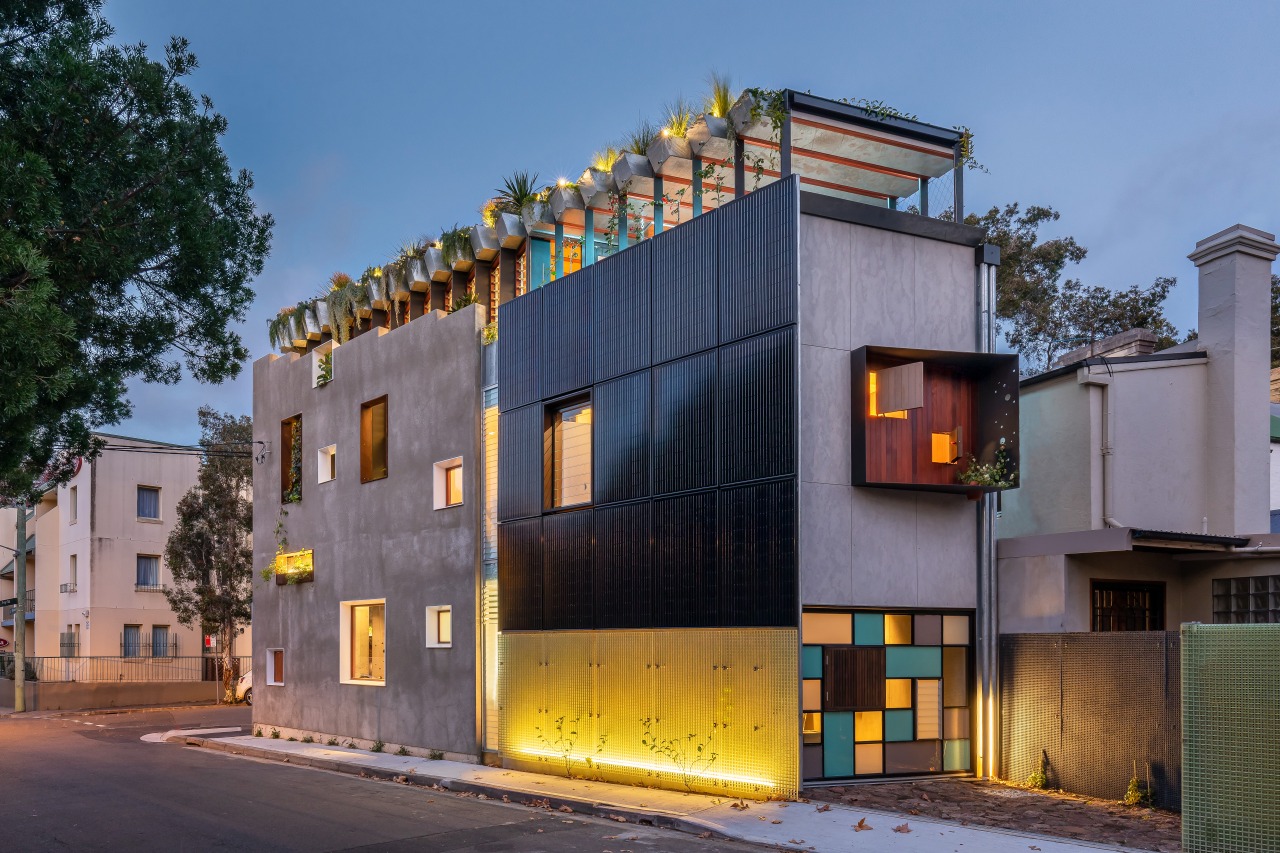Family first
It produces food and electricity and is a showpiece for how landscape and sustainability can be integrated into architecture – but first and foremost it's a great family home
Back in the 1990s, when architect Clinton Cole was doing his architecture degree, his trip into university lectures would have taken him past a 1940s corner shop top building – a design that has retail at ground level and a home above.
It was around that time, that the building was starting to show signs of neglect, eventually being abandoned and becoming derelict.
While Cole may not have paid much attention to the building in his student days, he certainly has recently, having converted it to a home for himself, partner Hanne and their three young children.
And while the pathway to rejuvenating the building was not a smooth one, resolving the challenges it presented has resulted in an holistically sustainable home with a very distinctive character.
Cole says the initial issues came with the council’s heritage designation on the two street facades, which meant their form and openings needed to be retained in any new building.
“This even extended to the stepped parapet, which was the result of the original corbelled parapet collapsing,” he says.
“However, we went ahead and rebuilt the two facades to match the original. Existing openings are now framed in pre-rusted Corten steel, which contrasts with the new perforations framed in gloss white powdercoated steel.”
Cole says there was a positive to having to match those two walls.
“At least, we didn’t have to decide on the cladding, which is a spackled render.”
But on the negative side, the two solid walls potentially restricted the amount of natural light entering the home.
Cole’s innovative response to this was to create a second, glazed facade inside the masonry one. This retained privacy, while providing plenty of daylight without excessive solar gain.
Using louvres for this glazed inner skin enabled the interiors to be cooled by extensive cross ventilation.
And Cole also made ingenious use of the space in between the double facade.
“Galvanised steel planter beds provide the structural bracing for the two skins and are filled with plants that cool the incoming breezes via transpiration.”

Outside the children’s bedrooms, the space is used for a 1600L aquaponics fishpond, home to edible silver perch. Meanwhile, the rooftop is given over to more planter beds growing fruit and vegetables, with others containing Australian native plants sitting on the roof edge.
While the two masonry facades designate the heritage section of the original building, a completely new addition came unencumbered with similar design restrictions. The bulk of this structure is clad in solar panels, generating about 30-40% of the home’s electricity.
“It would have been greater if the panels were angled at 30° on the roof,” says Cole. “But we wanted to use the roof area to grow food.”
Plus he wanted to show the public – and the thousands of architectural and engineering students that still pass the building every year as he did – how landscape and sustainability attributes can be integrated into architecture, rather than be add-ons as they often are.
But first and foremost this needed to be a home that was flexible enough for a growing family, as well as being a place for guests to stay.
“It’s a great family home. There are spaces where we can all come together, and others to go and do your own thing.
“It feels like a home, and we’re actively involved in it producing food – vegetables, fruit and fish. That’s been a very rewarding experience for us all.”
Credit list
Architect
Engineer
Landscape design and install
Roof
Glazing
Main flooring
Kitchen manufacturer
Benchtops
Sink
Ventilation
Toilets
Faucets
Awards
Builder and kitchen design
Steelwork
Interior stylist
Cladding
Wallcoverings
Cabinets
Splashback
Oven, cooktop, microwave, refrigerator, dishwasher and cooktop
Sink
Story by: Paul Taylor
Photography by: Ryan Ng, Murray Fredericks, Michael Lassman
Home kitchen bathroom commercial design
















